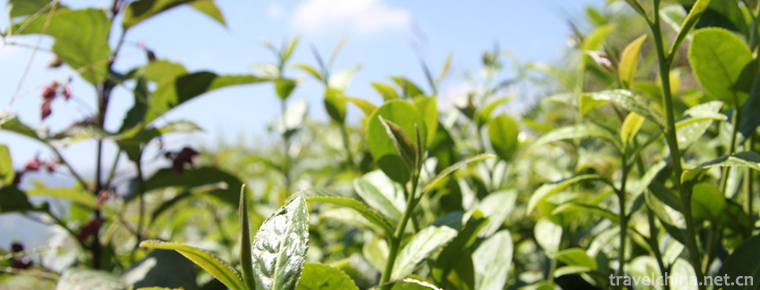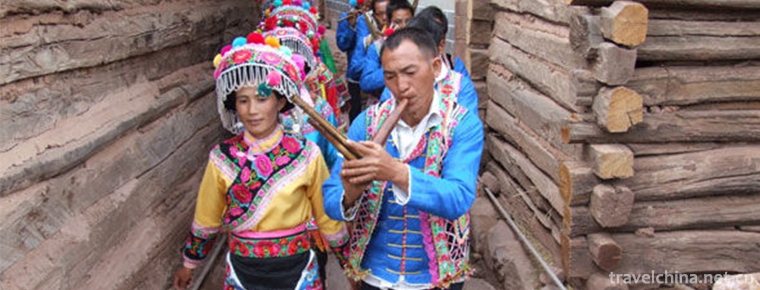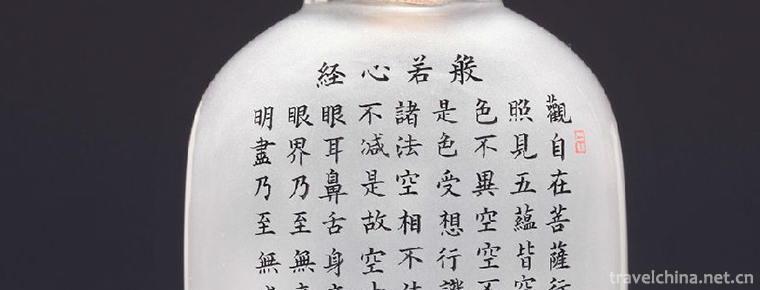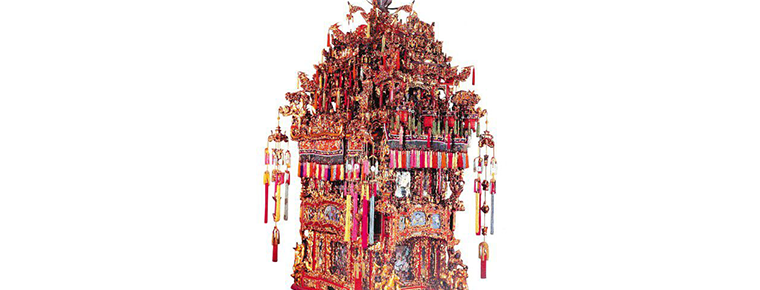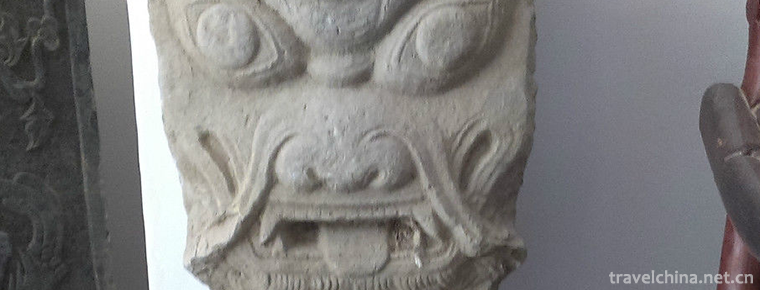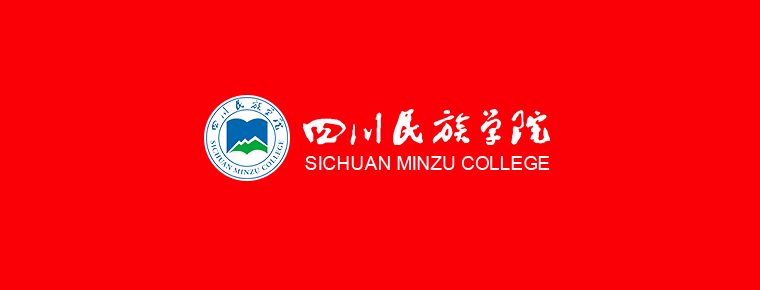Teochew woodcarving
Teochew woodcarving
Chaozhou woodcarving is a Chinese folk sculpture art, mainly used for architectural decoration, artifact decoration, furniture decoration, desk decoration, etc. After careful carving, pasted with pure gold foil, it appears brilliant, also known as Chaozhou golden lacquer wood carving ("Chaozhou" refers to today's Chaoshan area), and Dongyang woodcarving, and known to the world. China's two major woodcarving systems.
On May 20, 2006, Chaozhou woodcarving was approved by the State Council to be included in the first batch of national intangible cultural heritage list.
artistic characteristics
Chaozhou woodcarving is famous for its fine carving. In its production process, first of all, we should draw up a good drawing, that is, design well, and then select wood according to the actual needs of the carving objects. Its technological process generally goes through three processes: rough cutting, fine carving and gold lacquer pasting. Some woodcarving also need to draw gold lacquer paintings. The gold lacquer pasting and gold lacquer painting technology are its outstanding characteristics. Gold lacquer paintings are freehand and workmanship. Fine, made by high-level craftsmen. Chaozhou woodcarving artists have gradually formed a set of unique artistic processing techniques after long-term practice and exploration. Their sculpture techniques include relief, sunken carving, sawing through carving, through carving and round carving.
The choice of craft forms depends on the specific requirements of the subject matter, use and location of the carving object. Sometimes it is individual, sometimes it is cross-cutting, sometimes it is comprehensive and flexible use. Among them, the multi-level carving, especially drawing, relief, sculpture and other artistic techniques, is the most representative form of Chaozhou wood carving. Chaozhou woodcarving pays attention to the application of skills according to aptitude. For the works with rich content, the "Zhi" shape is often used in the composition. The path is clear and the level is distinct, which makes the limited space contain more content. For example, when dealing with complex stories and scenery, through reasonable and orderly arrangement of front and back, left and right, top and bottom, movement and quiet, far and near, the characters can either appear in winding mountain paths, or intersperse in pavilions, pavilions, pavilions, wooden stones, or be active in the halls and courtyards. They are unified and coordinated, full and complex, and the atmosphere is lively, but they are hidden from each other. Traces. There is no ambiguity or carelessness about the subtleties of the dynamic images. The hair, eyebrows, clothing lines and facial expressions of the characters, the swords and swords held by soldiers, the Coronet armor on the body, the rein of the horse, the flying and walking patterns of birds and animals, the swimming postures of fish, shrimps and crabs are delicately delineated. Detailed depiction of flowers, birds, insects, fish, patterns and other details can achieve the artistic effect of delineating details, displaying details and showing shapes.
In the process of completing the production of Chaozhou wood carving, each process and various craft forms are so fine, and the works are so delicate. The gold-pasted works are shining and brilliant. The gold-pasted wood carving is matched with gold lacquer painting and gold lacquer characters, which have more rich cultural connotations and more noble artistic forms, thus forming a delicate, delicate, delicate, magnificent and golden blue. The brilliant artistic effect and style can be described as a combination of ingenuity and exquisiteness.
Chaozhou woodcarving is mostly made of camphor wood with moderate toughness. Its carving forms are rich and varied, including relief, sunken carving, round carving, carving and carving. The finished products are exquisite and rich in layers. In one sculpture, Chaozhou woodcarving often uses the zigzag layout to make a picture. It cleverly divides the tortuous and continuous stories into different pictures by using the landscape pavilions and pavilions, so that the characters are complicated and not disorderly, and the plots are vivid and orderly. Considering the viewer's sight, the woodcarving decoration at the top of the citrus beam often exaggerates some parts of the characters, such as eyes deepening, nose heightening, mouth protruding, etc. It is just right to look up. In terms of composition, Chaozhou woodcarving imitates either Chinese painting or the stage of opera. Its characteristic is that it expresses different stories in the air simultaneously on a woodcarving surface, and its narrative way is so-called "path" (dealing with the context of characters'activities in a special way of composition). The most striking decorative design of Chaozhou woodcarving is the door, which is divided into top and cross belly, fence, door and window, enterprise belly, middle and lower belly and other decorative parts. The theme, form and technique used in decoration of each part are different. In addition to architectural decorative sculpture, Chaozhou wood carving can also be used to make God pavilion, God sedan chair, box entry, Xuan Furnace cover, candlestick, fruit dish and other ornaments. Its carving forms can be divided into sinking carving, relief carving, general carving and round carving.
Chaozhou woodcarving is widely used to decorate buildings, furniture and sacrificial utensils. The effect of gold pasting is brilliant. It contains rich Lingnan flavor and rich decorative themes. With complicated but not chaotic, exquisite and unique carving techniques, it often arranges complex story plots through the front and back, overlapping up and down, and arranging mountains, winding paths, pavilions and pavilions in limited space. Reasonable layout, realistic portrayal of the proportion of characters, vivid facial expressions, lively atmosphere, the artistic form of expression appears magnificent and solemn, exquisite and magnificent.
Scope of subject matter
Chaozhou woodcarving is rich in subjects ranging from flowers, birds, insects, fish, fruits of the four seasons, rivers and seas, rare birds and animals, to folk myths and legends, and ancient operas. As far as the common works are concerned, anthropogenic works can be divided into five categories: patterns, Bogu, animals, flowers, fruits, insects, landscapes and immortal Buddhas. The themes of the characters are mostly drawn from the well-known stories such as The Romance of God, The Romance of the Three Kingdoms, The Romance of Sui and Tang Dynasties, Journey to the West, The Water Margin, A Dream of Red Mansions and Strange Tales from Liaozhai. These characters, which are loved by the people, are repeatedly shown by the sculptors. In addition, the "Blue Guan Xue" praised by Han Yue for Chaozhou's thorn history, and the "seven virtuous persons entering Beijing" for the examination in Chaozhou in the Ming Dynasty, are also the themes with unique local characteristics. Infinitely rich themes urge carpenters to explore a variety of forms and techniques, according to different themes, different uses, different parts, and flexible use alone, staggered or integrated.
Chaozhou woodcarving is closely related to all aspects of the practical life of the masses, and more adapted to the ideological, emotional and aesthetic needs of the masses. Most of its themes come from folklore, legend, opera and historical stories which are popular and well-known among the people, such as the praise of bravery and wit, the bitter meat plot, the memory of the sages of Lan Guanxue, the praise of pure love, Chen Sanwuniang and so on, and some directly reflect social life: fishing and woodcutting, building houses, describing ordinary labor, foreign ghosts. Candlestick shows people's mockery of imperialists. There are also a variety of rare birds, animals, flowers, fruits, insects and fish, and the performance of aquariums and subtropical plants in the river and sea is particularly outstanding. As for the ever-changing geometric patterns, they also show infinite wisdom and rich aesthetic feeling.
Carving techniques
Chaozhou woodcarving uses ordinary wood produced locally; building decoration carving is relatively large, generally using Chinese fir; furniture and utensils carving is mostly using camphor wood. Camphor wood is not compact in texture, artists take its advantage of a certain degree of toughness and easy to play knives, carved layers of overlapping, exquisite and thorough; after carving, painted and pasted with gold, not only brilliant, but also anti-moisture moth, durable not cracking deformation or decay.
There are five kinds of carving techniques: sunken (concave) carving, relief (convex) carving, round (three-dimensional) carving, through carving (multi-layer) and saw-through carving (single layer). Among them, through carving is the most outstanding. It absorbs relief, round carving and other techniques and merges into one exquisite and exquisite technique. Its appearance has epoch-making significance in the history of wood carving art development. In sculpture techniques, relief, carving, line engraving or individual or comprehensive flexible use according to different themes and different decorations, in order to express different forms of beauty.
Distribution area
Chaozhou woodcarving is a folk carving art in Chaozhou, Guangdong Province. It is mainly used to decorate buildings, furniture and sacrificial utensils. This skill is mainly popular in Lianshang Village and Xidu Village, Yixi Town, Xiangqiao District, Chaozhou City. It also affects Raoping, Shantou, Chaoyang District, Jieyang, Jiexi, Puning, Lufeng, Dapu, Wuhua, Xingning, Meizhou City, Meixian District and other counties, cities and coastal areas in southeastern Fujian Province.
Because of the wide distribution, there are local style differences. As far as Chaoshan and Xingmei areas are concerned, Chaoshan woodcarving is characterized by complex layout, tight structure and delicate delicate structure, which is good at expressing continuous plots; Meizhou woodcarving knife method is concise, with few characters, which highlights the main plots.
Inheritance significance
Chaozhou woodcarving is a valuable artistic heritage of China. It will provide a lot of useful experience for the development of architecture, craftsmanship, sculpture and painting. Chaozhou woodcarving has unique and outstanding creation in the combination of decoration and realism, the unity of beauty and practicality, the simple treatment of exquisite carving and unification, the consideration of both plain and durable sight, the management of composition, image depiction, the application of knife method, painting and gold sticking, etc. It is the art of melting carving and painting in one furnace. In Chaozhou area, the ridges, eaves and exterior walls of houses are usually decorated with gray batches, inlaid magnets, brick carvings or stone carvings; wood carvings are placed in prominent places such as doors, windows, front porches, beams, pillars and so on, which are not exposed to the sun and rain; in furniture, large screens, several cases, beds, next cabinets, chairs and benches, as small as candles with lamp wicks and paper media, can not be decorated without carvings; and related to sacrifices. Goddess sedan chair, box, stove cover, candlestick and so on are more useful places for wood carving artists.
Due to the change of modern living environment, Chaozhou woodcarving has lost its original dependence conditions, coupled with the weakening of traditional folklore, shrines, pavilions and other items fade out of daily life, so Chaozhou woodcarving is becoming less and less useful. On the other hand, Chaozhou woodcarving is characterized by its fine craftsmanship, great difficulty in creation, many processing procedures and many manual operations. It is hard and unable to form large-scale production, and its economic benefits are poor. As a result, fewer and fewer people are engaged in woodcarving processing and production, especially the younger generation is unwilling to engage in this work. This has led Chaozhou woodcarving into a situation of lack of successors and urgently needs rescue and support.
The state attaches great importance to the protection of intangible cultural heritage. On May 20, 2006, the intangible cultural heritage was approved by the State Council and listed in the first batch of national intangible cultural heritage list. On June 5, 2007, the Ministry of Culture confirmed that Li Derong and Chen Peichen of Chaozhou City, Guangdong Province, were the representative successors of this cultural heritage project, and were included in the list of 226 representative successors of the first batch of national intangible cultural heritage projects.
Relevant heirs
Chen Peichen, Li Delong , Guo Shaojun , Chen Sumin, Chen Shudong.
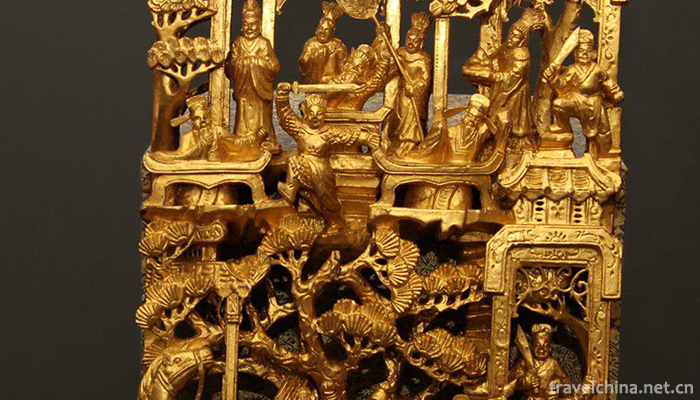
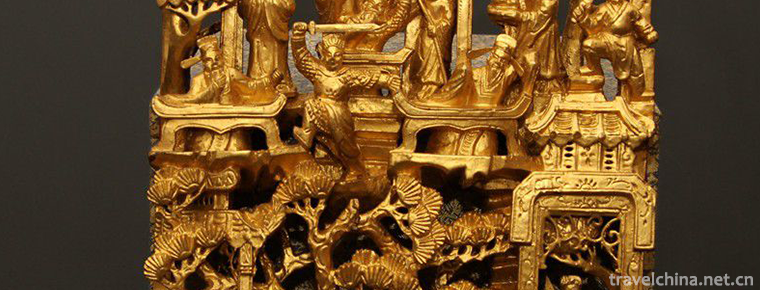
Teochew woodcarving
-
Anxi Tea Grand View Garden
Anxi Tea Grand View Garden in Quanzhou, Fujian Province is located in Fengguan Mountain on the north side of Fengcheng City. It covers an area of 11 mu
Views: 150 Time 2019-01-02 -
Daming Palace Site in Changan City of Tang Dynasty
Daming Palace Site is located in Taihua South Road, Xi'an City, Shaanxi Province. It was destroyed in Binggong at the end of Tang Dynasty.
Views: 186 Time 2019-02-13 -
Mei Ge
Meige is the general name of Yi folk song and dance and folk oral literature. Its content is all-encompassing and almost reflects the history, culture, production and life of the Yi people. It is rega
Views: 182 Time 2019-06-02 -
a bottle with painted designs
Internal painting is a unique traditional craft in China. It originated from snuff bottle painting. The interior painting method is a special deformed fine brush, in glass/crystal, amber and other mat
Views: 151 Time 2019-06-07 -
Ningbo Zhujin lacquer wood carving
Also known as "Golden Lacquer Wood Carving", it is a traditional Chinese craft. Composition features mainly draw on the advantages of Chinese folk paintings and literati landscape flowers an
Views: 175 Time 2019-06-08 -
Taishan Stone Dang Custom
Taishan Stone Dangdang Custom is a relic of ancient people's worship of spiritual stones. Mountain and stone are regarded as personality by myth, which is a typical traditional folk culture that has b
Views: 172 Time 2019-06-18 -
Sichuan Minzu College
Sichuan College for Nationalities is a full-time general undergraduate college in Sichuan Province. It is also the only national undergraduate college in Kangba Tibetan District. It is located in Guza
Views: 199 Time 2019-08-31 -
Huainan Normal University
The school was founded in 1958 when it was a teacher's College in Huainan. In 2000, approved by the Ministry of education, the former Huainan normal school, Huainan Education Institute and Huainan nor
Views: 295 Time 2019-11-16 -
Introduction to Chinese embroidery
Embroidery, known as needle embroidery in ancient times, is a kind of technology that uses embroidery needle to guide color thread, embroiders the designed patterns on textiles, and forms patterns with embroidery traces. In ancient times, it was called "Juju" and "pinju".
Views: 121 Time 2020-12-12 -
Meishan primary industry
In 2019, the total sown area of crops is 318000 hectares, an increase of 1.1%. Among them, the planting area of grain crops was 196000 hectares, an increase of 0.6%; the planting area of oil crops was 58000 hectares, an increase of 1.8%; the planting area
Views: 344 Time 2020-12-18 -
Historical evolution of Yibin
In the sixth year of Jianyuan (135 B.C.), Emperor Wu of Han Dynasty established Qianwei County, and at the beginning of the county administration, he (the west of Zunyi City, Guizhou Province) was established. In the first year of the first Yuan Dynasty of emperor Z
Views: 463 Time 2020-12-18 -
Guangan primary industry
In 2019, the sown area of grain in Guang'an City is 287000 hectares, and the total grain output is 1.8 million tons, an increase of 1000 tons or 0.04%. Among them, the rice output was 1.047 million tons, down 0.4%; the corn output was 448000 tons, an incre
Views: 186 Time 2020-12-19
